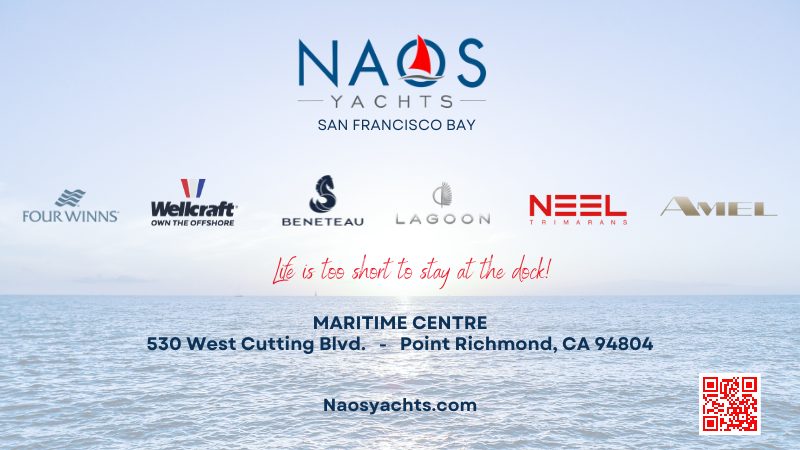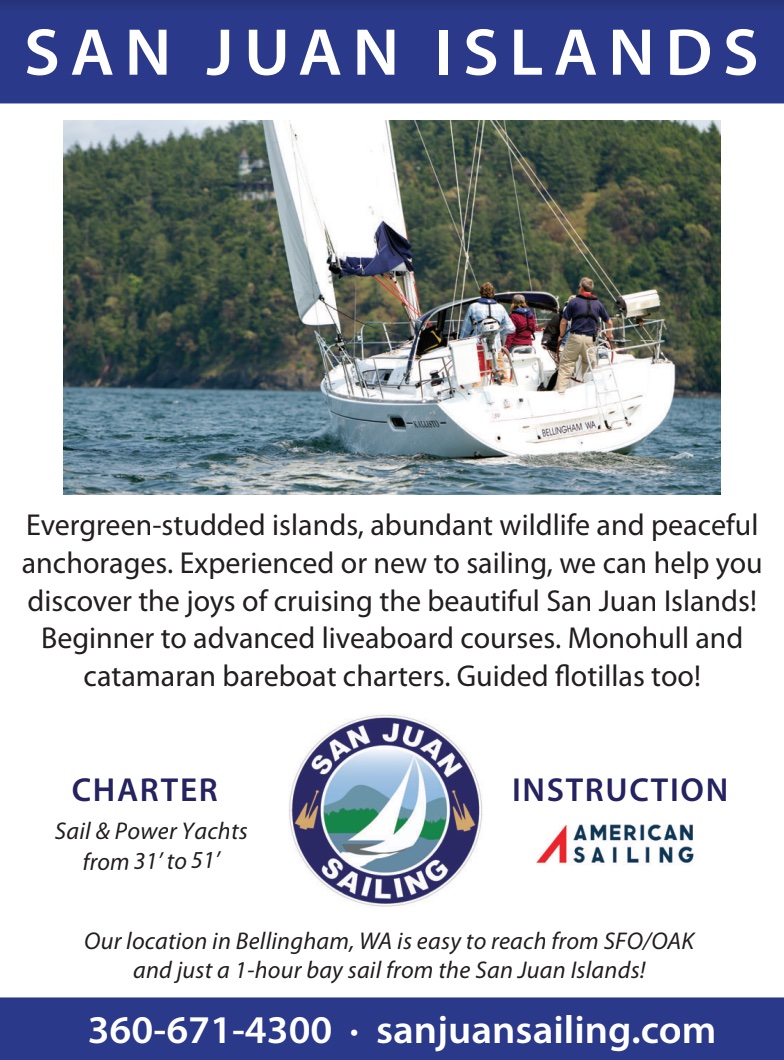
Motor Yacht ‘Nakoa’ Aground in Maui Freed, Then Sinks
After breaking free from a mooring and drifting onto the rocks in a marine reserve in Maui more than two weeks ago, a nearly 100-ft motor yacht was finally extracted from shore by a salvage team, but sank a short time later in open water.
Prior to the sinking of the Nakoa, a 94-ft, 120-ton 2004 Sunseeker 94, Hawaii’s Department of Land and Natural Resources said in a statement that the salvage operation in Honolua Bay “would end in one of two ways: either with the yacht towed all the way to Honolulu, around 90 nautical miles away, or she would have to be scuttled en route due to numerous holes along her hull,” Boat International reported.
Clearly, it was the latter.
The Boating and Ocean Recreation division of the DLNR reported that Nakoa was scuttled in 800 feet of water. “It had taken on water, was listing starboard and riding bow high after being pulled free by a tractor tug early this afternoon,” the DLNR stated in a press release.
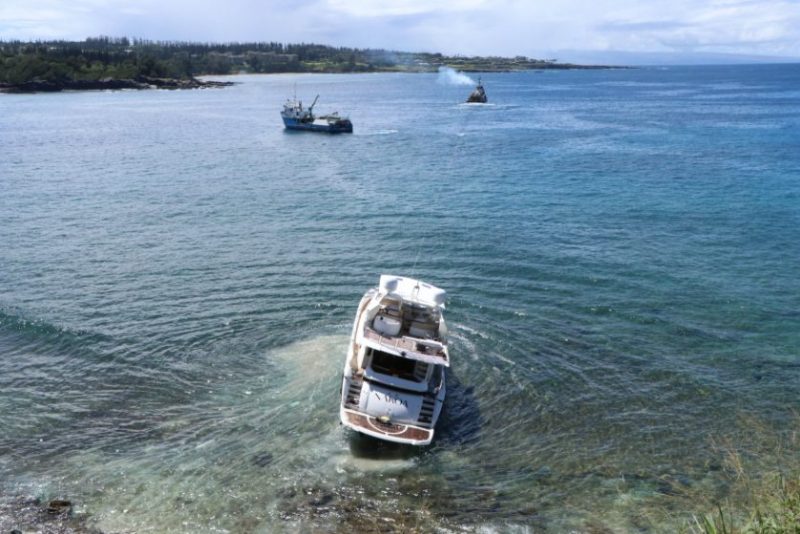
After Nakoa went aground in early February about 700 feet outside the Honolua-Mokulēʻia Bay Marine Life Conservation District, around 470 gallons of petroleum products and 14 marine batteries were recovered from the yacht, “with helicopters transporting 55-gallon drums of fuel from the boat to a staging area where it could be disposed of,” according to Boat International.
But there was clearly spillage in the wake of Nakoa’s grounding, as seen in photos. The DLNR found damage to around 30 coral heads and live rock. The Nakoa was one of two luxury yachts owned by Noelani Yacht Charters, according to Hawaii Public Radio. The DNLR said that the owner could face “hefty penalties because coral in this area is protected by State Law.”
Clearly, there is some work to be done by lawyers and bureaucrats.
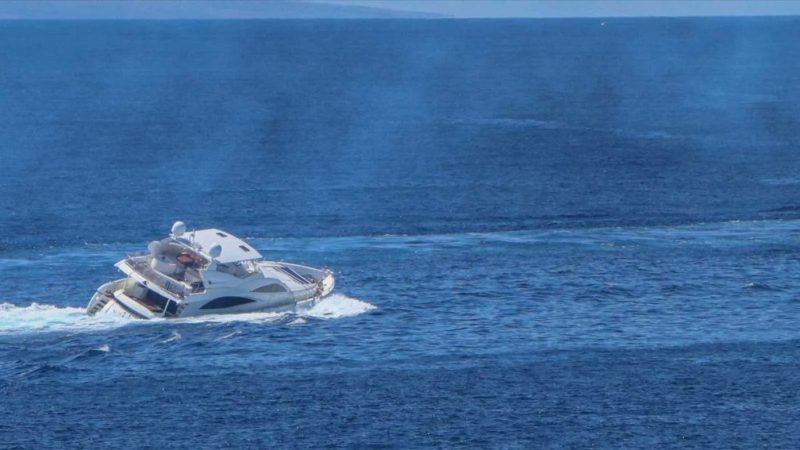
The Nakoa’s grounding raised the ire and righteous indignation of people in the boating world. Check out Letters in the April issue of Latitude 38 to hear from Latitude Nation, including one marine salvager in Hawaii who described the perils of the industry.
“A tremendous amount of respect is owed to all those that chose to stick their neck out rendering assistance to the Nakoa yacht. I have seen how all too often marine salvage ends up being a thankless job in which one has to drop everything else at a moment’s notice while taking on massive liabilities doing work that is physically, mentally, and emotionally exhausting,” said David Demarest, the manager of Giraffe Maui Marine Salvage & Supply, LLC.
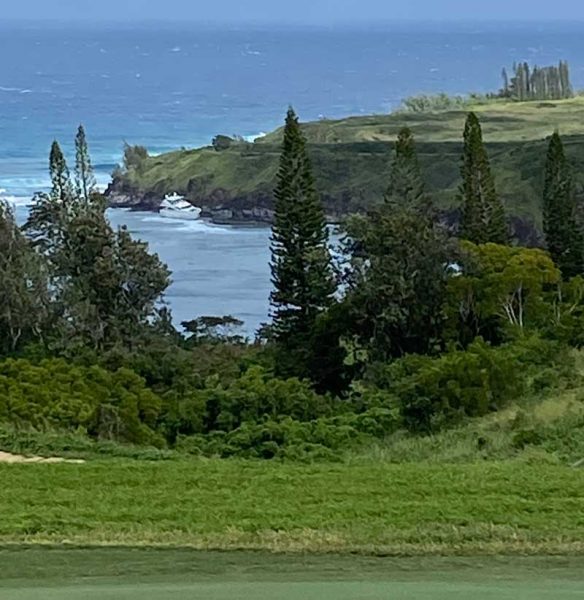
“There are ways to skillfully minimize the high risk of personal injury, death, or substantial environmental harm while conducting a marine salvage operation, but as things currently are, all the substantial time and money, along with wear and tear on gear, oftentimes end up being put out in good faith only to have an owner and/or their insurance company refusing to appreciate, let alone pay for, services rendered in a timely manner.”
Caption Contest(!)
Welcome back to Caption Contest(!). Seals sure do get around… This month we share a photo of Angela Goodwin getting ready to round the leeward mark on the Cal 20 Greyhound, taken by Volker Corell during Cabrillo Beach YC’s “Wet Wednesday,” on June 30, 2021.
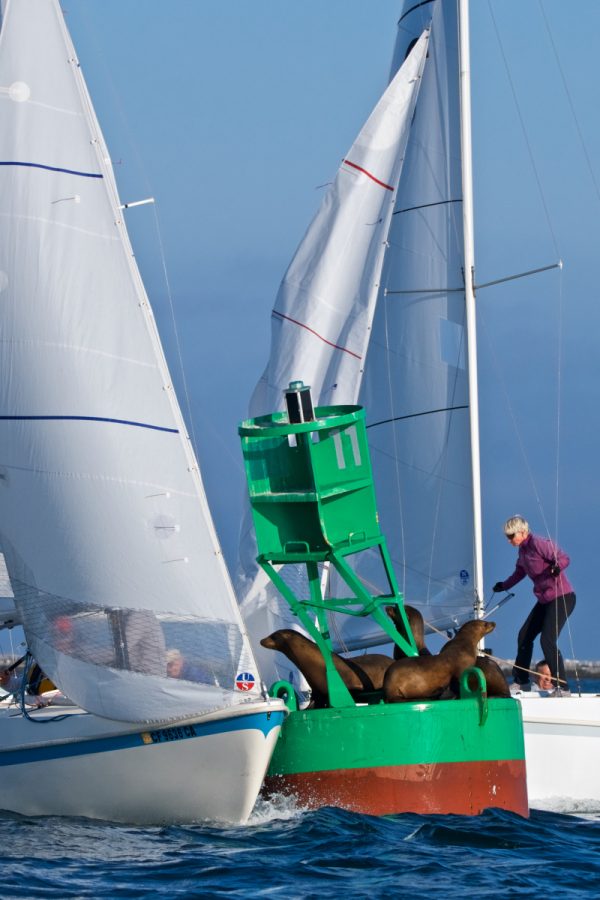
And remember to check out February’s Caption Contest(!) winners in the March issue of Latitude 38!
Naos Yachts Now Open in San Francisco Bay Area
Our team is ready to help you start on your new boating adventures – Sell, buy, or service your boat with the Naos Yachts San Francisco Bay team.
Captain Mary Patten of ‘Neptune’s Car’
While we’re celebrating Women’s History Month, it is worth remembering the story of Mary Patten’s captaining a 216-ft clipper ship around Cape Horn to San Francisco.
On a run from New York to San Francisco in 1856, the captain of the clipper ship Neptune’s Car fell ill. Then, somewhere in the vicinity of Cape Horn, Captain Joshua Patten fell into a coma. The first mate lobbied the crew to pull into Argentina or return to New York. The captain’s wife, Mary (the only other person aboard who could navigate), assured them that she could get them to San Francisco. She won their unanimous support.
Neptune’s Car rounded Cape Horn under her command, and arrived safely in San Francisco. At the time, Mary Patten was 19 years old — and eight months pregnant. She is considered the first female commander of an American merchant ship. The hospital at the Merchant Marine Academy in Kings Point, NY, is named for her.

After 56 days she sailed Neptune’s Car into San Francisco without the aid of a pilot. One month after docking, she gave birth to her first child.
Oakland City Council Passes Nuisance Vessel Act to Clean Up the Estuary
Sailor and tireless Oakland Estuary advocate Brock de Lappe wrote to let us know that his and many others’ efforts to address abandoned and illegal boats on the Estuary have resulted in the Oakland City Council’s unanimously passing a new Nuisance Vessel Ordinance, with amendments proposed by Councilmember Janani Ramachandran. There will be a second vote needed later in March, to implement the plan fully.
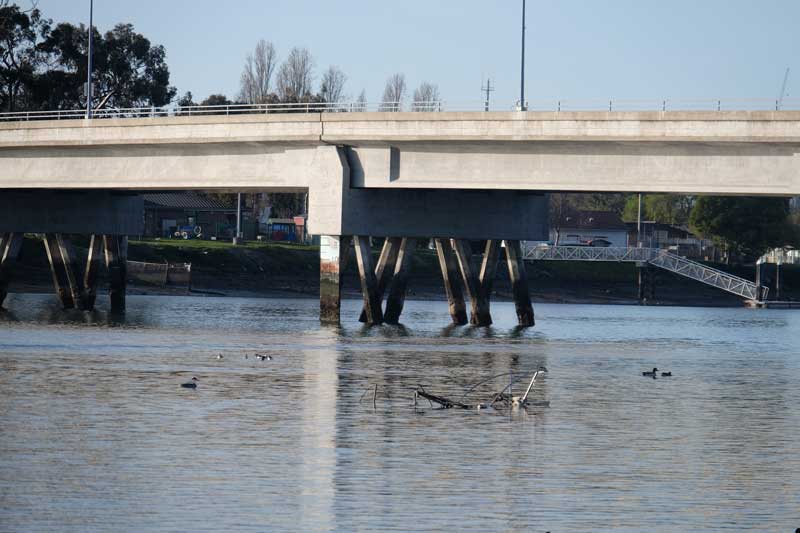
According to Brock, Councilmember Noel Gallo specifically asked Oakland’s lead marine patrol officer Kaleo Albino a yes or no question about whether he could perform the required work with the proposed amendments. Albino responded yes. Brock continued, “I’m told that this is the first ordinance of its kind dealing with illegally anchored inhabited vessels anywhere in the nation.”
The motivation for the ordinance comes from the environmental and navigation dangers presented by often unregistered, uninsured and poorly maintained boats that have been washing up on shore, sinking, and anchoring in or drifting into navigation channels. These vessels become a threat to the ecosystem and to rowers, sailors and others using the Estuary for boating. According to SFGate, Oakland could be fined up to $6,000/day by the BCDC, which is responsible for regulating the Bay’s environmental health and providing Bay access. The BCDC considers boats “Bay fill” and thus manages where and how recreational boats can use shoreline marinas and anchorages for recreation or limited liveaboard opportunities.
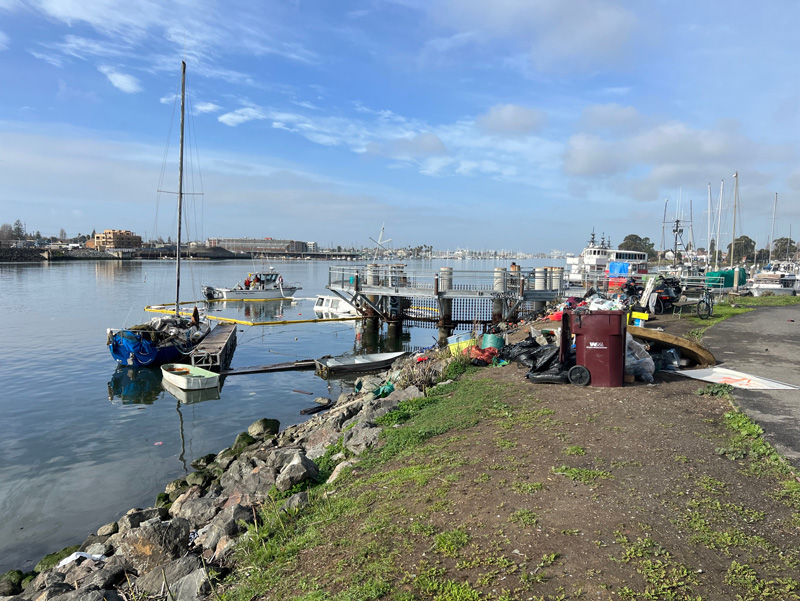
Brock says he is now awaiting the engagement of the Oakland Police Department (OPD) marine patrol unit to begin clearing the Estuary of illegal anchor-outs, abandoned derelicts and sunken wrecks. This could begin as soon as the ordinance passes a second City Council vote later this month. To support the effort, Brock reports the OPD is applying for a $150,000 SAVE grant from the California Division of Boating and Waterways, though he acknowledges, “It is very unlikely that this will be sufficient funding to meet the current need, and the City of Oakland is facing a $200 million budget deficit. Despite current financial limitations, this is a major step forward. There are better days to come for the Oakland Estuary.”
Some see this as an attack on the homeless population, while others see it as a victory for the environment and expanded access for safe public use of the Bay. Finding housing for those in need is a simultaneous challenge for the city and society. Knowing there are many more old, poorly maintained boats around the Bay, we think it is unlikely that housing advocates, and all of us who care about both the Estuary and people, would suggest Oakland invite boaters to abandon unwanted boats along the Estuary shoreline as a housing solution. Uninsured, unregistered vessels with non-skilled boaters aboard are not a good option for housing. If old boats are an option it would be better to find a less dangerous place to keep them. They could be placed in Lake Merritt or out of the water in holes in parks and parking lots where they would be less subject to the weather, less dangerous to the environment, easier to manage, safer for the residents, and less dangerous to other boaters on the waterways. Residents would also have more access to public support and social services when needed. Boats do not need to be in the water to serve as housing.
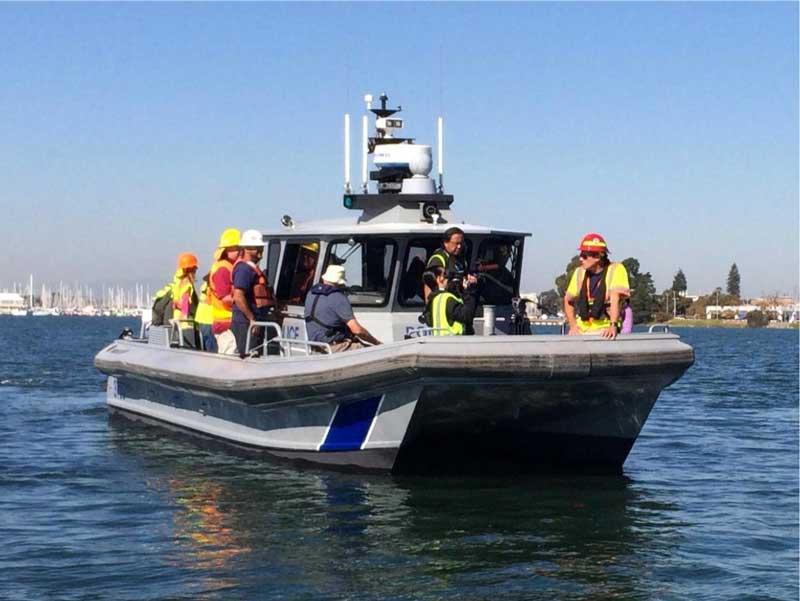
The Oakland Police Department does struggle to fund, staff, and support their on-the-water operations. Their primary vessel is their Moose aluminum power catamaran, built in Vallejo. We just spoke with Ken Royal of Moose Boats, who let us know the aluminum catamaran was built in Vallejo and recently repowered at Svendsen’s Bay Marina with Volvo engines by Helmut’s Marine. Naturally, the Oakland Police Department is primarily concerned with policing on land and is less capable of patrolling its shores. The federally funded Coast Guard has no shortage of vessels or trained mariners, but wants to leave patrolling the Estuary’s waters and around their island to others.
Alameda Mayor Marilyn Ezzy Ashcraft is also offering to help support the fund-raising efforts needed to clean up the Estuary. Alameda is also currently having a new fireboat built by Moose boats.
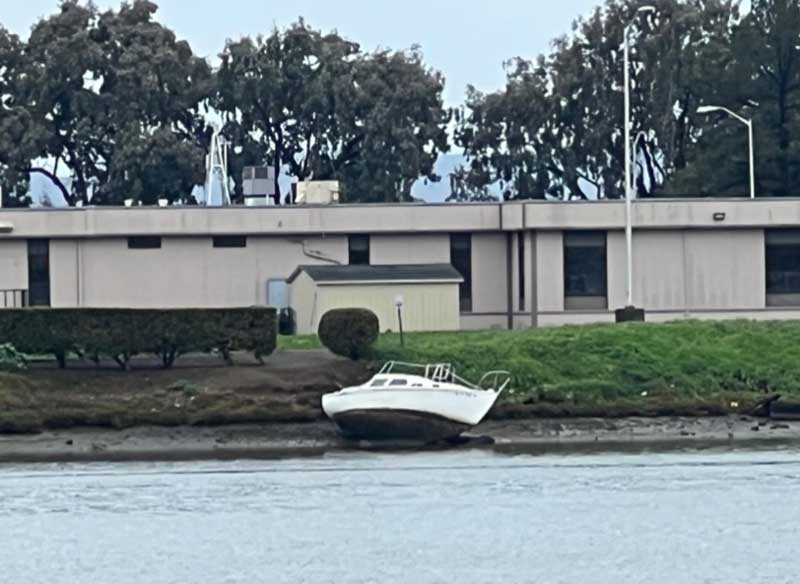
We all wonder why the Coast Guard feels obligated to check many boats on the Bay for safety items and registration papers, while they don’t appear to have the same motivation for boats that are adrift, aground, or anchored right off Coast Guard Island in the Estuary. Interestingly they are now submitting a new proposal to expand the safety zone around the island to “50 yards into the navigable waters of the Oakland Estuary,” which we presume pushes the problem away from the Coast Guard and toward Oakland or Alameda.
Millions of people surround the narrow strip of water between Oakland and Alameda, so it’s no wonder there are lots of demands on its usage. We’ve been reporting on the boats in the Estuary, the Oakland A’s stadium, the proposed pedestrian bridge over the Estuary, and recently, the proposed expansion of the Oakland Turning Basin. For those who see the Estuary as a great place for families and kids to connect, to learn about the ocean, learn to sail, race, and participate in the sailing lifestyle accessed by the Estuary, these population and development pressures are worth attention. It’s active citizens like Brock de Lappe who speak up for the Bay and boaters who will help find the balance among all these competing forces and keep the Estuary open to sailors, the maritime trades, and all citizens of the Bay Area.
As we have thought, debated and pondered about housing and boats, our current thinking is that most sailors are not holding this against the people on the boats — they want to get people safely housed and also protect the environment. Clearly, we want to help the people that need it, need housing, and need a hand up. Protecting the Bay and the town budgets responsible for unregistered, uninsured boats that wash up on the shoreline is a separate issue. Secure, managed mooring fields similar to San Diego and Newport Beach should also be part of the solution. We think we’re all struggling with how to help the people and also help the Bay. As a society we should be able to do both.

